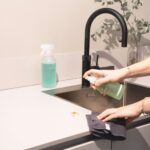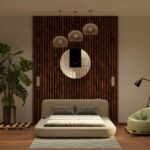Table of Contents
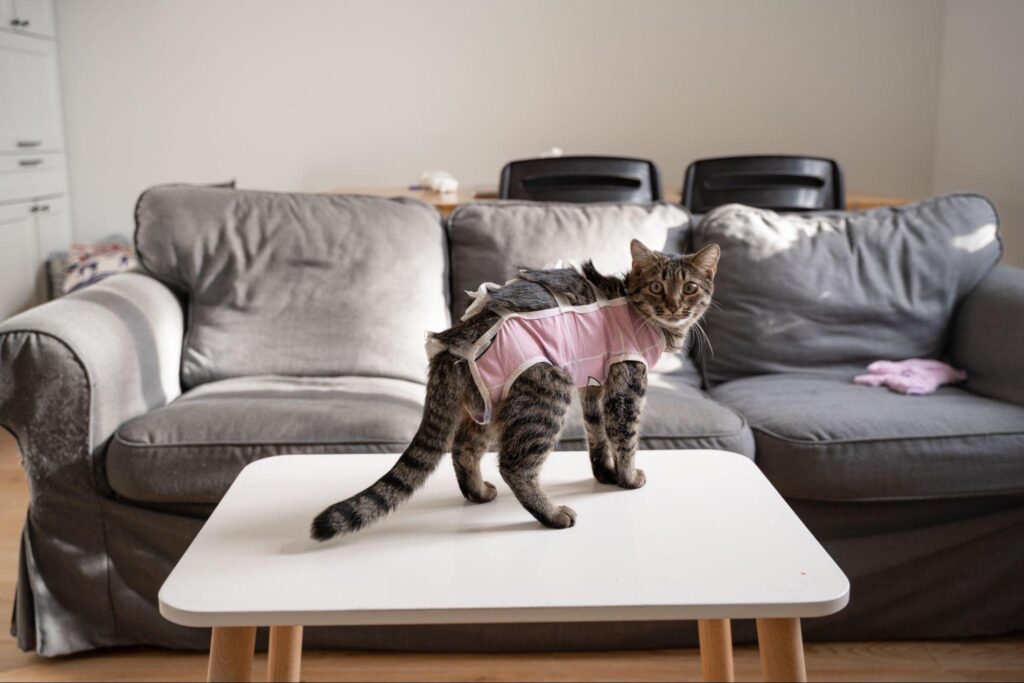
Living with pets doesn’t mean sacrificing your interior design ambitions. Those gorgeous Instagram-worthy living rooms aren’t just for pet-free homes anymore. With strategic approaches and some clever hacks, your furniture can stay beautiful despite your furry family members’ best efforts to redecorate. Here’s how to maintain harmony between stylish interiors and the pets you adore. These clever tricks will keep pets from ruining your furniture.
The Fabric Strategy That Changes Everything
The single most important decision for pet-friendly furniture is fabric selection. The right materials can withstand claws, accidents, and fur accumulation while still looking sophisticated.
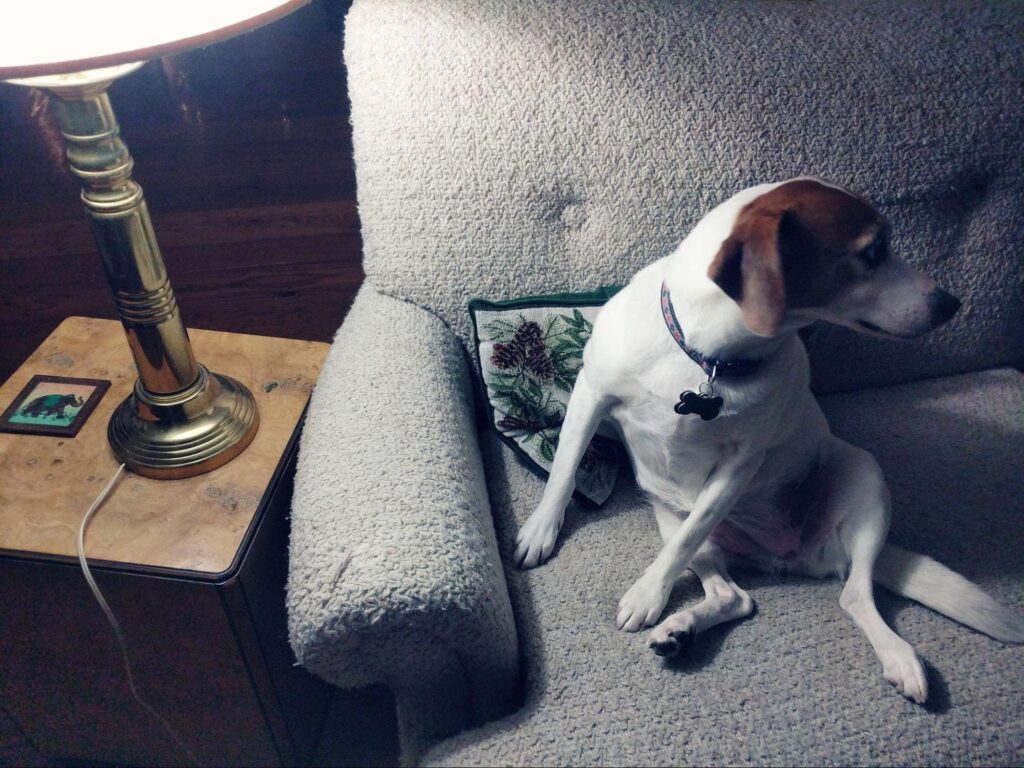
Performance fabrics have revolutionized pet-friendly decorating. Brands like Crypton, Inside Out, and Sunbrella have developed technically advanced textiles that resist stains, odors, and wear while maintaining the look and feel of designer fabrics. These materials feature tight weaves that prevent claw damage, moisture-repellent treatments that prevent liquid absorption, and easy-clean properties that handle accidents without drama.
For the ultimate in pet-resistant upholstery, look for fabrics combining these characteristics:
- Synthetic fibers like polyester or nylon that resist claw snags
- Tight weaves that prevent claws from penetrating
- Moisture-repellent treatments that prevent liquid absorption
- Solution-dyed manufacturing that prevents fading from frequent cleaning
Even natural materials can work with the right selections. Smooth leathers rather than suedes or textured varieties improve with age despite occasional scratches. The natural oils in leather develop a patina that can incorporate minor pet damage into character-building “distressing” that enhances rather than detracts from the appearance.
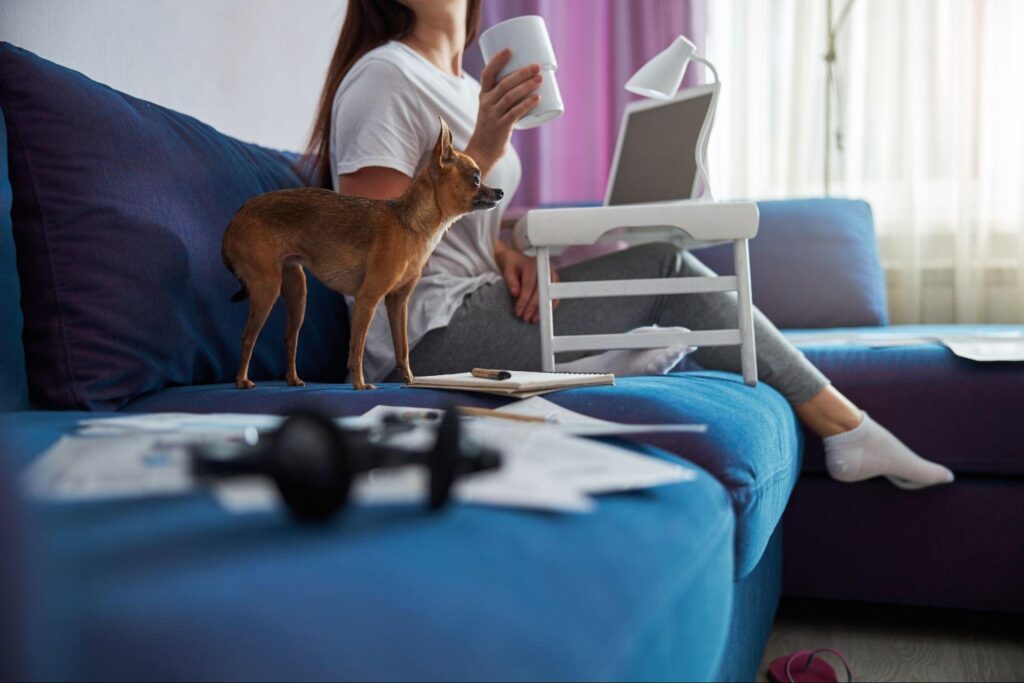
When selecting performance fabrics, pay special attention to the cleaning codes and warranty information. The best pet-friendly options feature simple cleaning protocols using common household products rather than requiring specialized chemical treatments. Some manufacturers now offer specific pet-related warranties covering damage from claws or bodily fluids – a significant benefit worth the potential premium cost. Before purchasing, request fabric samples to perform your durability tests at home. Apply gentle claw-like pressure, test with water droplets to assess moisture repellency, and evaluate how easily pet hair can be removed from the surface with standard cleaning tools.
Color Selection Secrets Professional Designers Use
Strategic color choices keep pet hair, minor stains, and inevitable wear far less visible between cleaning sessions.
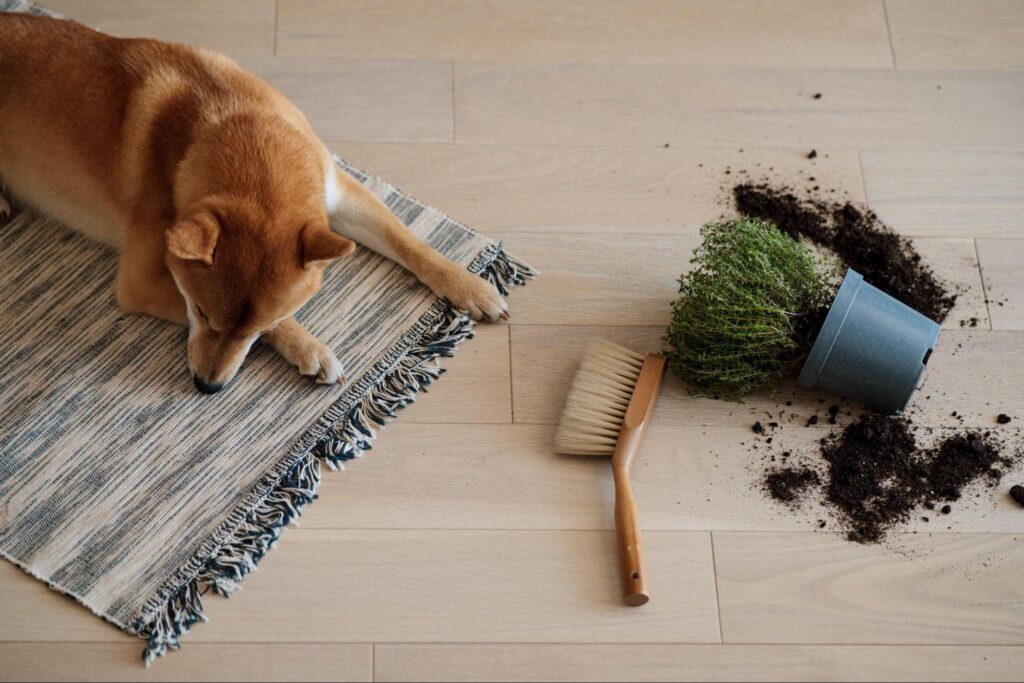
The most effective approach matches furniture colors to your pet’s fur coloration. Medium-toned fabrics in shades similar to your pet’s coat naturally camouflage shed hair. For multi-colored pets, choose fabrics with subtle patterns incorporating several tones similar to your pet’s coloration.
Avoid solid extremes on either end of the spectrum. Very dark fabrics highlight light fur, while very light upholstery makes dark fur immediately visible. The middle range proves most forgiving, with tan, warm gray, and taupe offering particular versatility across various pet colorations.
For homes with multiple differently-colored pets, patterned fabrics provide the best solution. Subtle patterns like small-scale geometrics or tweedy textures disguise both light and dark fur while maintaining sophisticated appearances. These patterns similarly obscure small stains or wear marks that inevitably develop with pet ownership.
Protective Layers That Don’t Scream “Pets”
Unlike the plastic couch covers of yesteryear, today’s protective options enhance rather than detract from your design scheme.
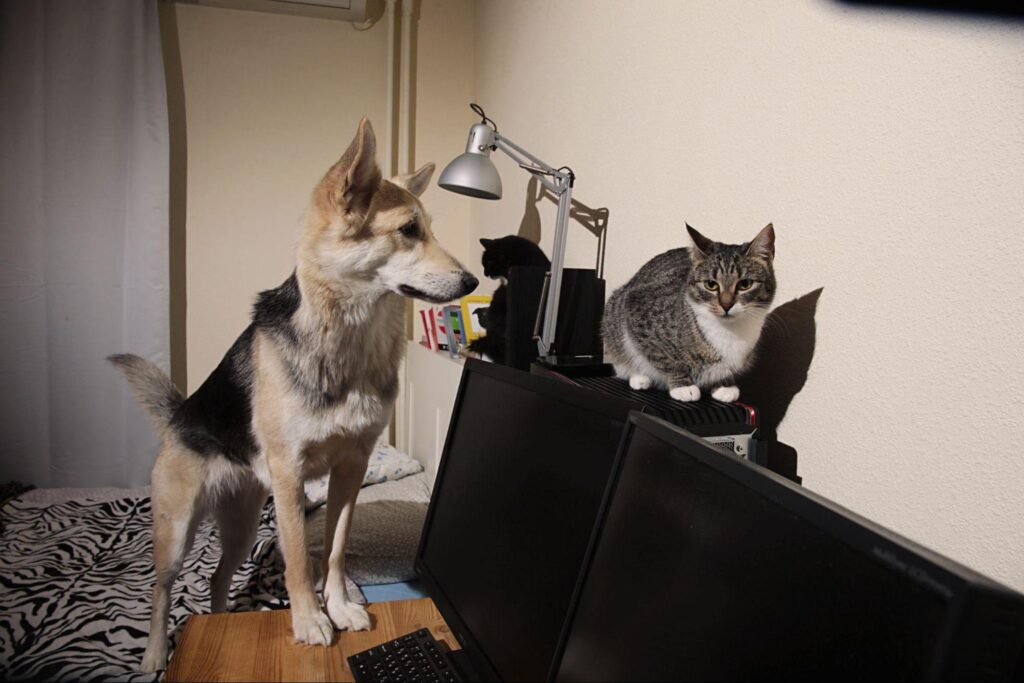
Stylish throws strategically placed over prime lounging spots provide easily laundered protection while adding textural interest. Select washable materials in colors that complement your overall design scheme. Rotate multiple options to maintain fresh appearances while always having protection available.
For more complete coverage, fitted furniture covers have evolved dramatically from utilitarian options of the past. Companies like Bemz create custom slipcovers for popular furniture pieces from IKEA and other manufacturers, allowing complete protection with designer-approved aesthetics. These washable covers permit occasional complete refreshing while protecting underlying upholstery.
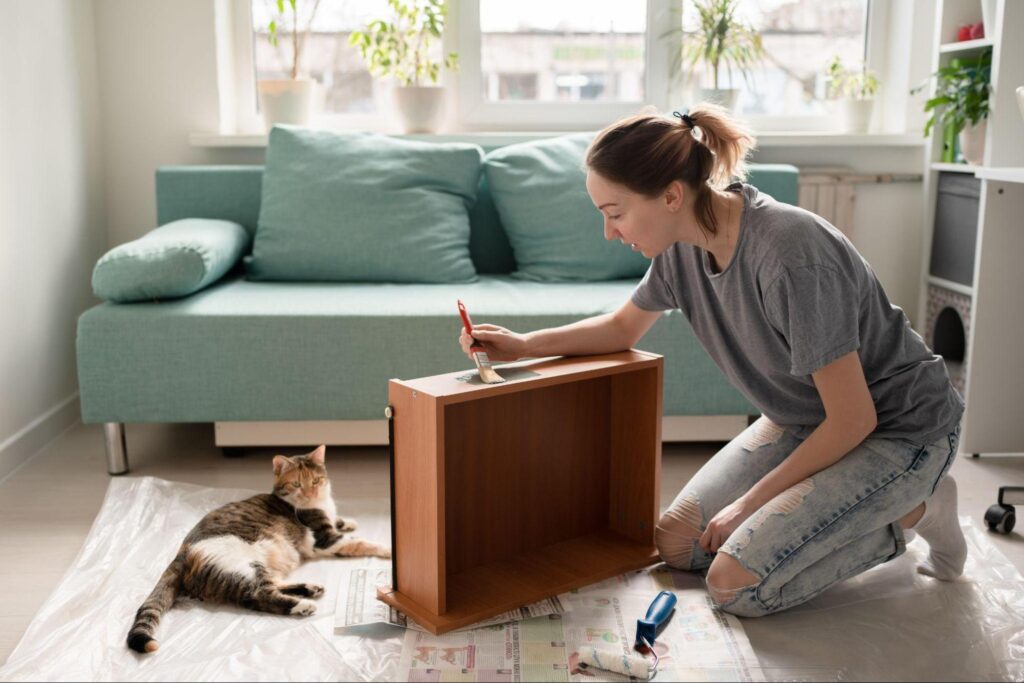
Consider attractive barrier options for particularly problematic areas. Decorative bolsters placed along sofa backs can prevent cats from using this prime scratching location. Attractive bed benches at the foot of beds create both design interest and barriers preventing pets from accessing bedding with dirty paws.
Behavior Modification Through Strategic Design
The most effective furniture protection addresses pet behavior proactively rather than just defending against it. Thoughtful design can redirect natural behaviors away from valuable furnishings.
For cats, provide more appealing scratching alternatives positioned near their favorite inappropriate scratching locations. Modern cat furniture from companies like Tuft + Paw, Catit, and Mau offers design-conscious scratching options that complement rather than clash with sophisticated interiors. Place these alternatives adjacent to previously targeted furniture and temporarily make the furniture less appealing with double-sided tape.
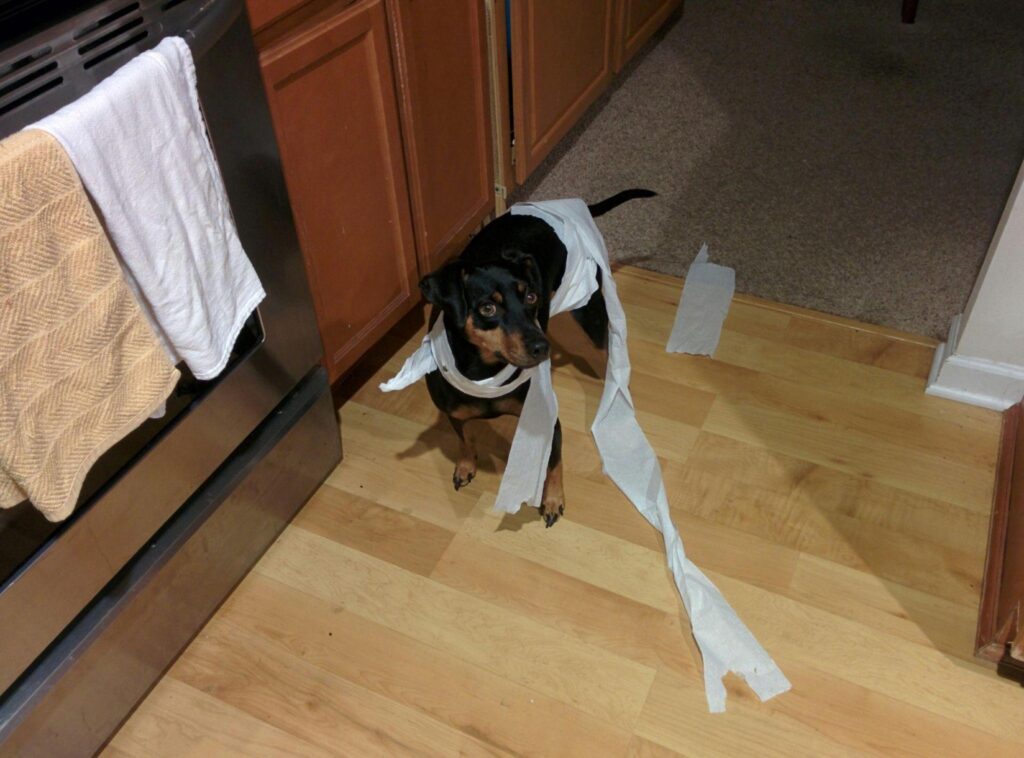
For dogs who claim furniture territory, create equally comfortable dedicated spaces nearby. Elevated dog beds positioned adjacent to human furniture offer similar vantage points while maintaining distinct pet zones. When these spaces incorporate the same comfort features as human furniture—plush cushioning, position near windows, or heat sources—many dogs willingly choose their designated spots.
For persistent furniture climbers, consider providing alternative elevation. Wall-mounted cat shelves create a vertical territory for cats while serving as interesting architectural elements. For smaller dogs, attractive pet steps or ramps can provide access to one designated furniture piece rather than allowing free reign over all furnishings.
Maintenance Systems That Work
Even the best-behaved pets create some impact on furnishings. Establishing efficient maintenance systems minimizes accumulated damage while keeping your home looking its best.
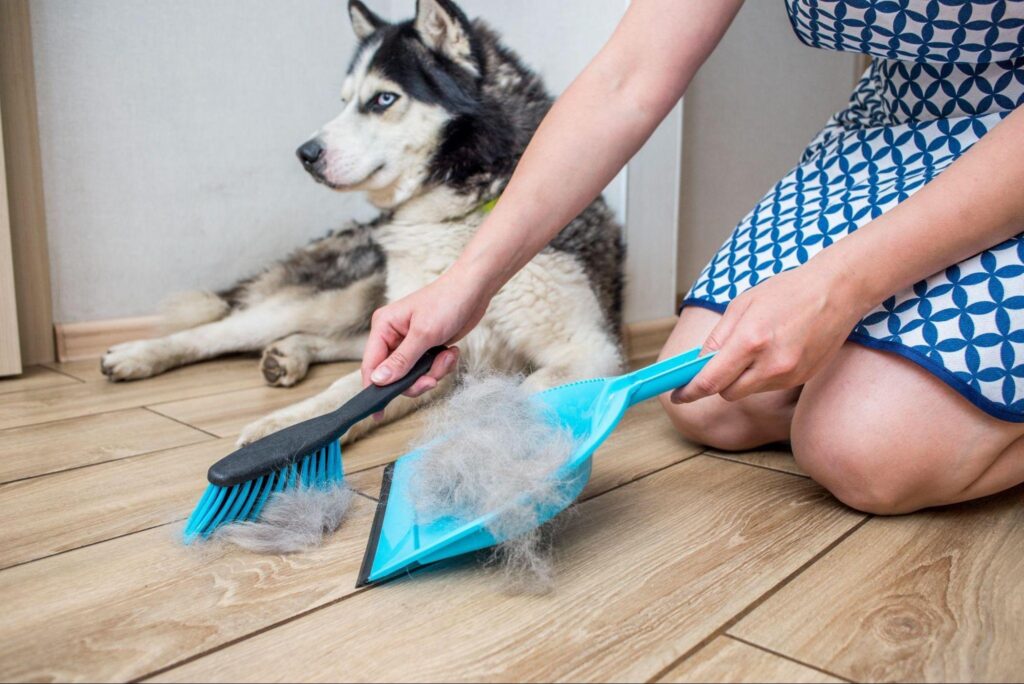
Regular pet grooming significantly reduces furniture impact. Establish weekly brushing routines to capture loose fur before it sheds onto furniture. For heavy shedders, consider monthly professional grooming to thin undercoats before seasonal shedding peaks. This proactive approach dramatically reduces the fur that eventually reaches your furnishings.
Implement frequent light cleaning rather than occasional deep cleaning. Keep lint rollers strategically placed throughout your home for quick touch-ups between more thorough cleaning sessions. Regular vacuuming with pet-specific attachments prevents fur from working into fabric fibers where it becomes more difficult to remove.
Consider protective treatments appropriate to your furniture materials. Fabric sealants create invisible barriers against stains and odors while leather conditioners prevent pet oils from permanently penetrating surfaces. These treatments, reapplied according to manufacturer recommendations, significantly extend furniture lifespan in pet households.
Sharing your home with beloved pets doesn’t require sacrificing your design standards. With thoughtful material selection, strategic design choices, and consistent maintenance, your home can feature both beautiful furnishings and happy pets. The most successful approaches work with rather than against your pets’ natural behaviors, creating environments that satisfy both human aesthetic desires and animal instincts.

Hi, I’m Christian, a 43-year-old father of two and a lifelong DIY enthusiast. My workshop is where I spend countless hours experimenting, upgrading, and fine-tuning. Sharing my experiences and practical advice is my way of helping others create homes they love.



